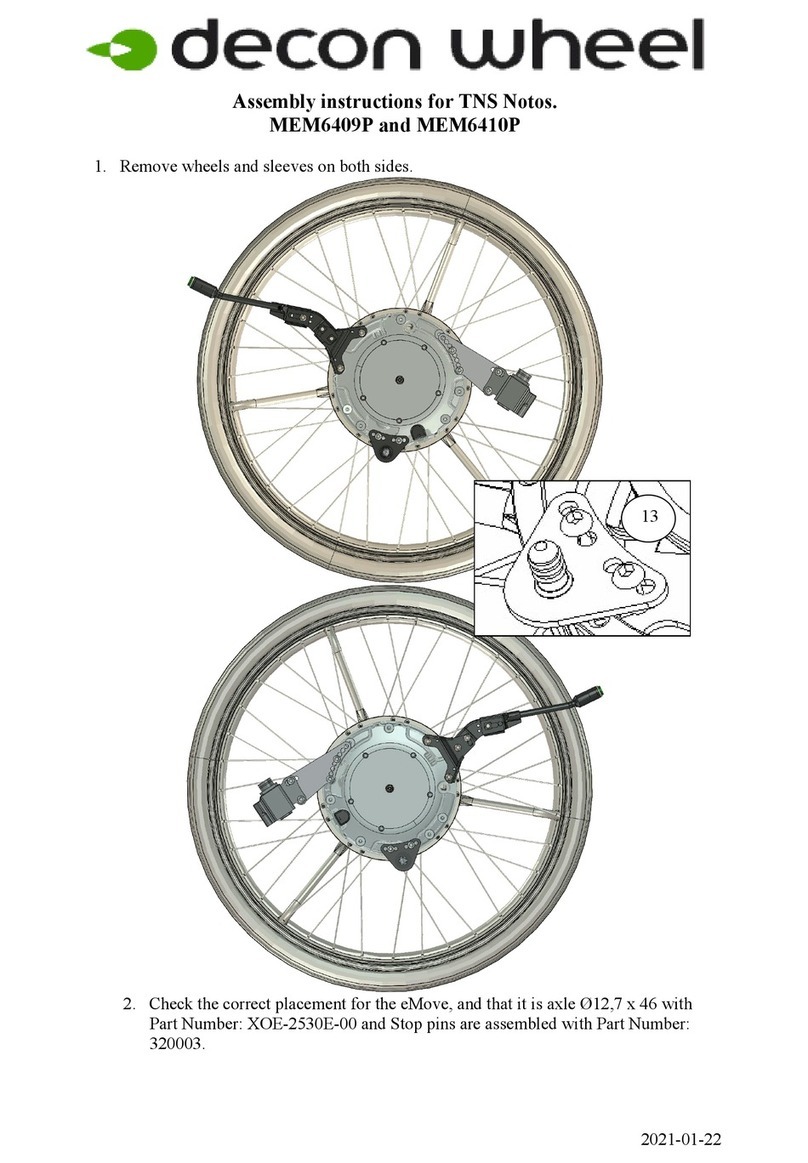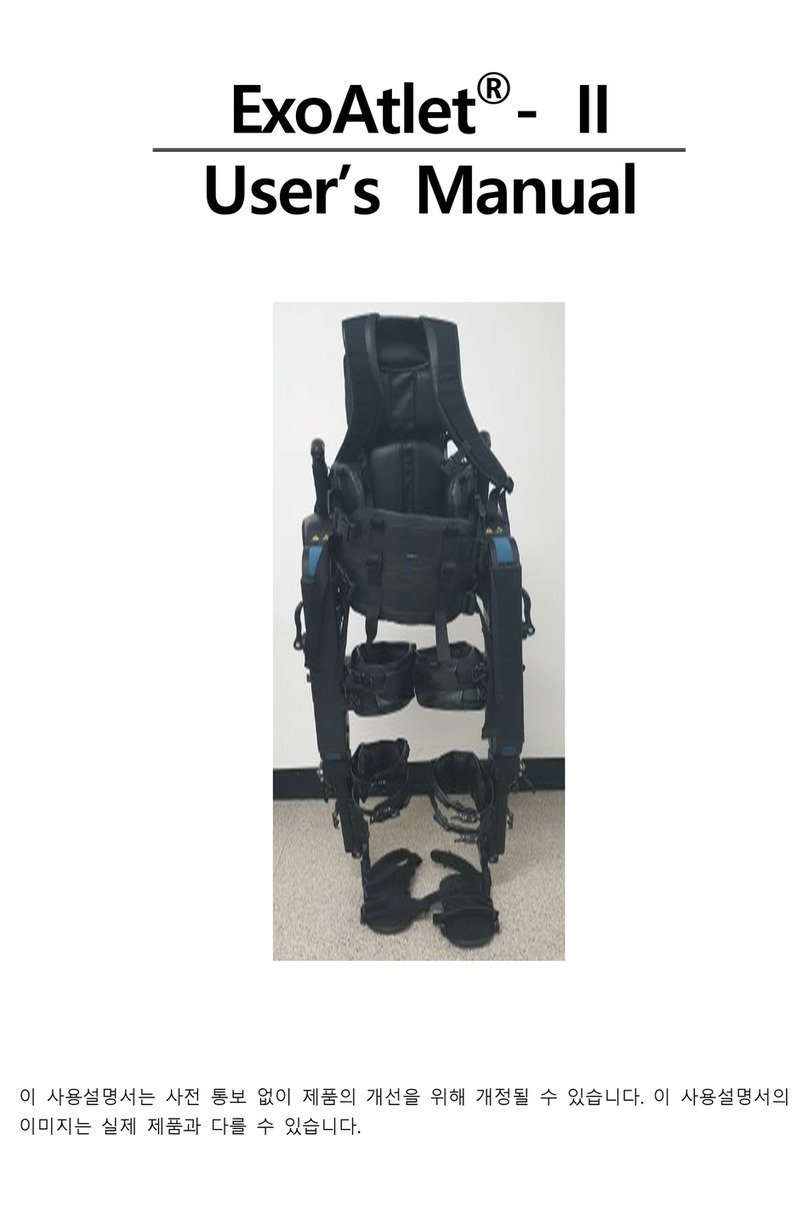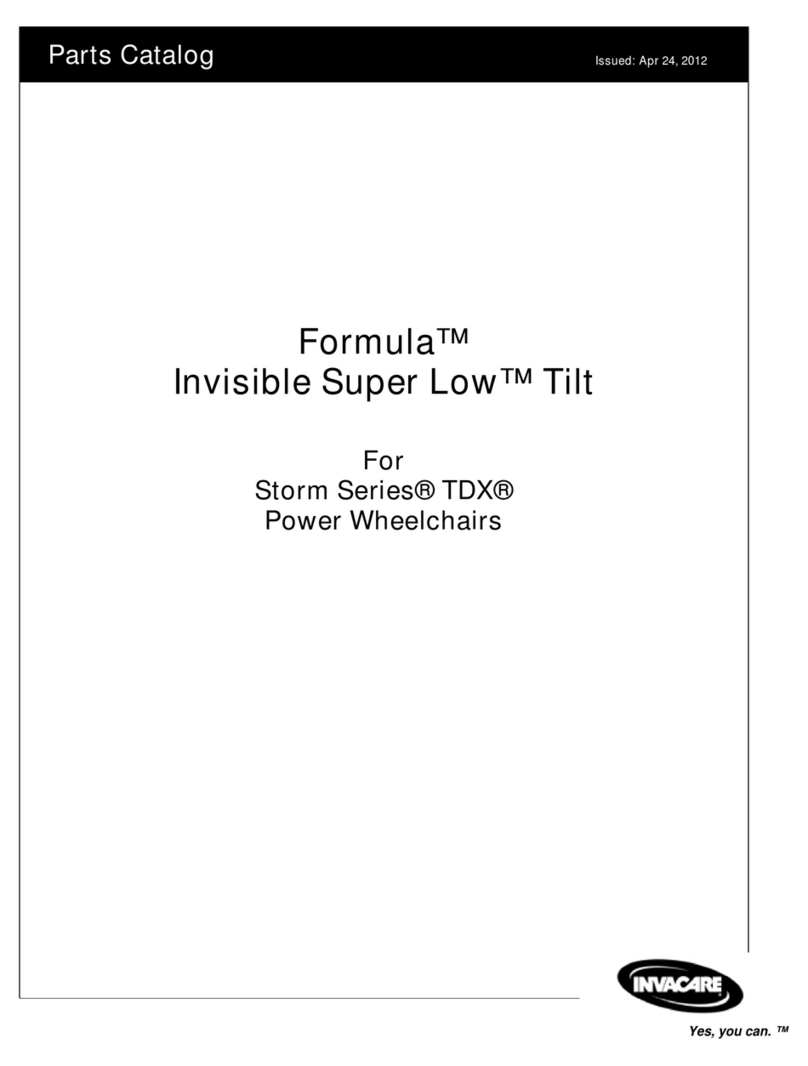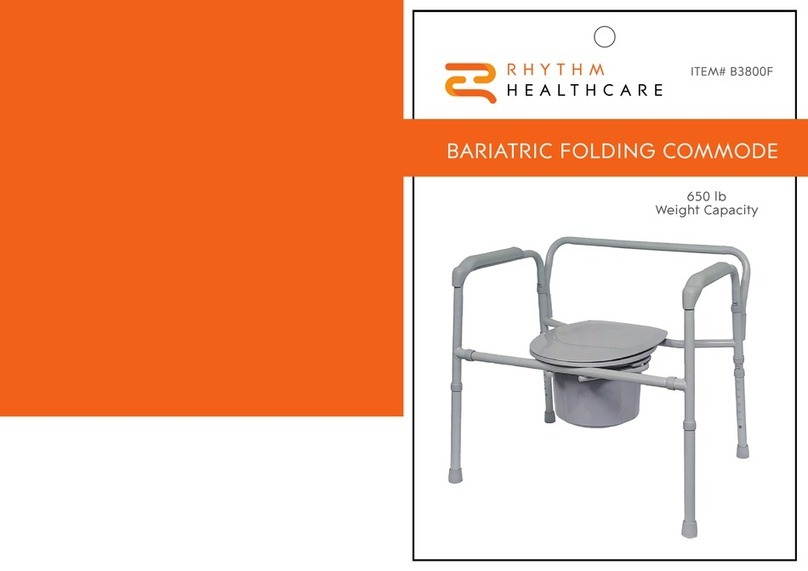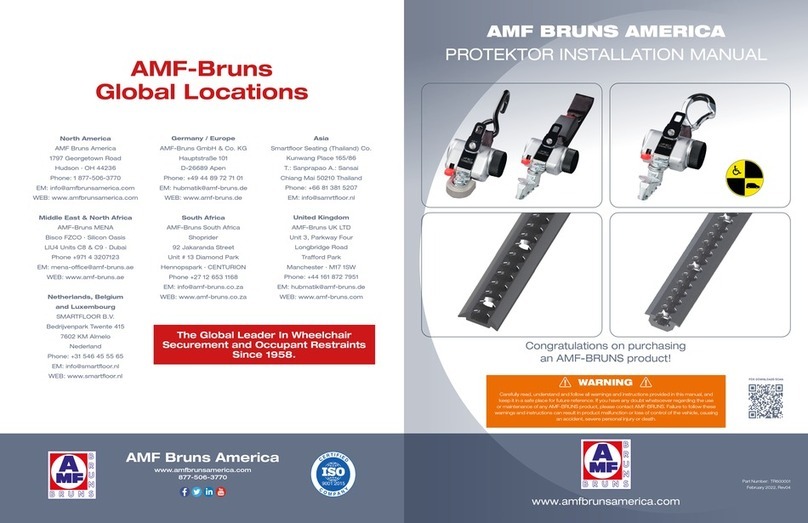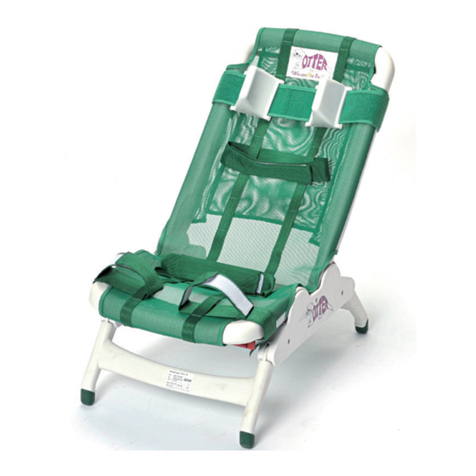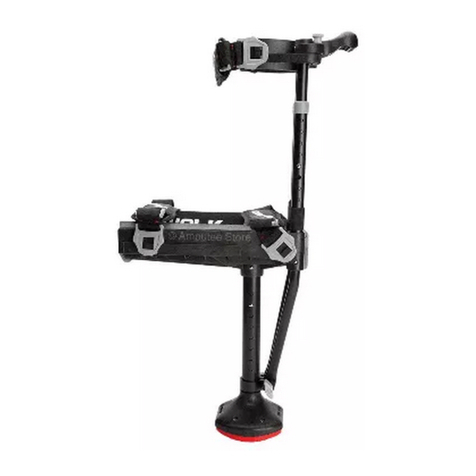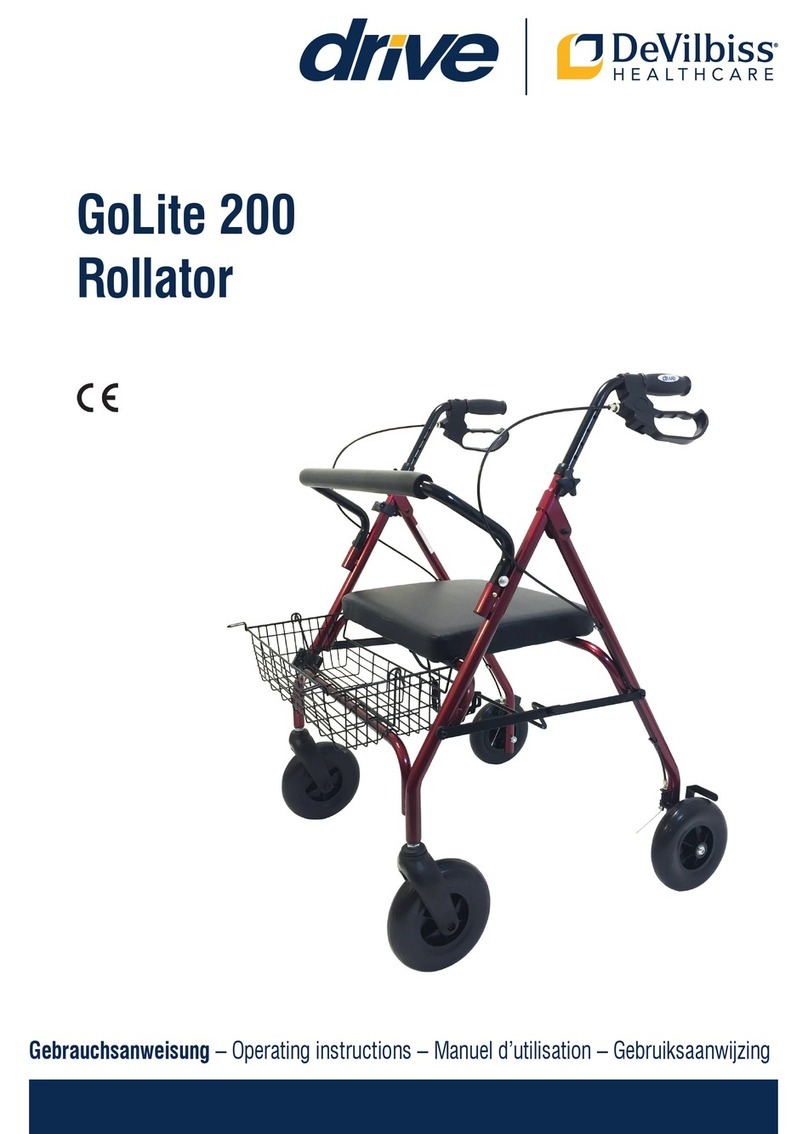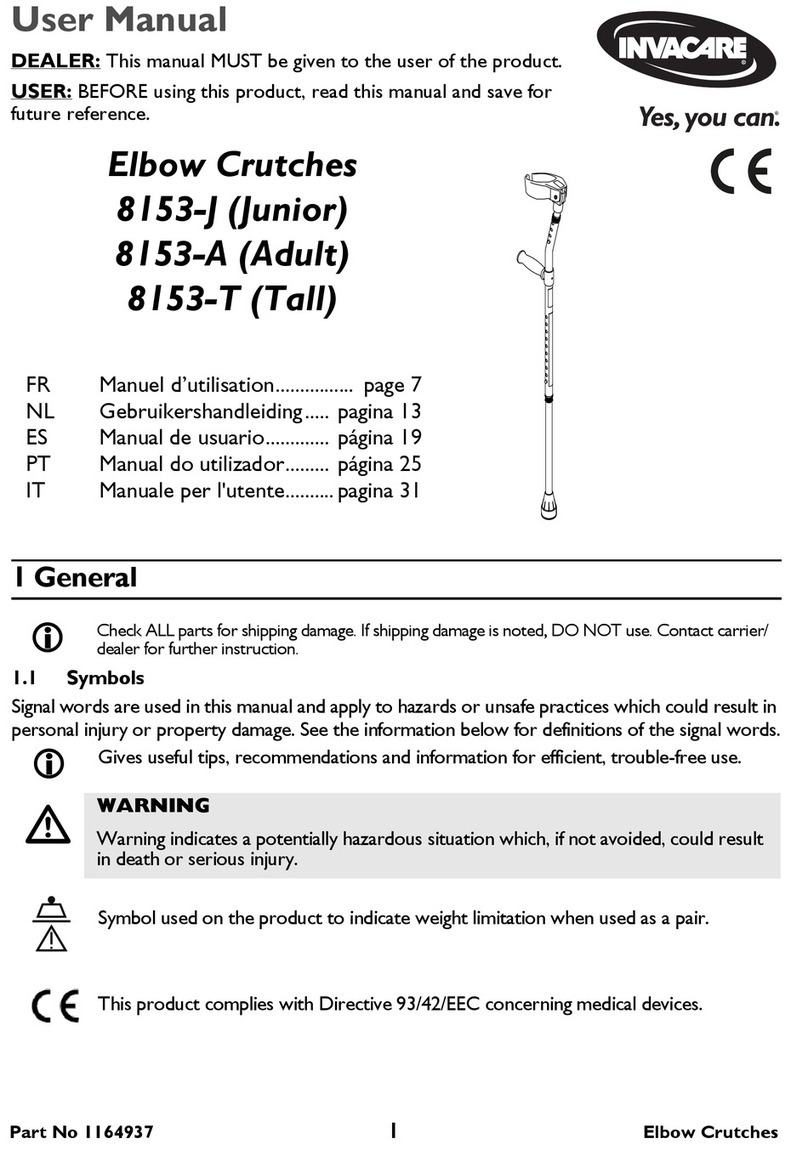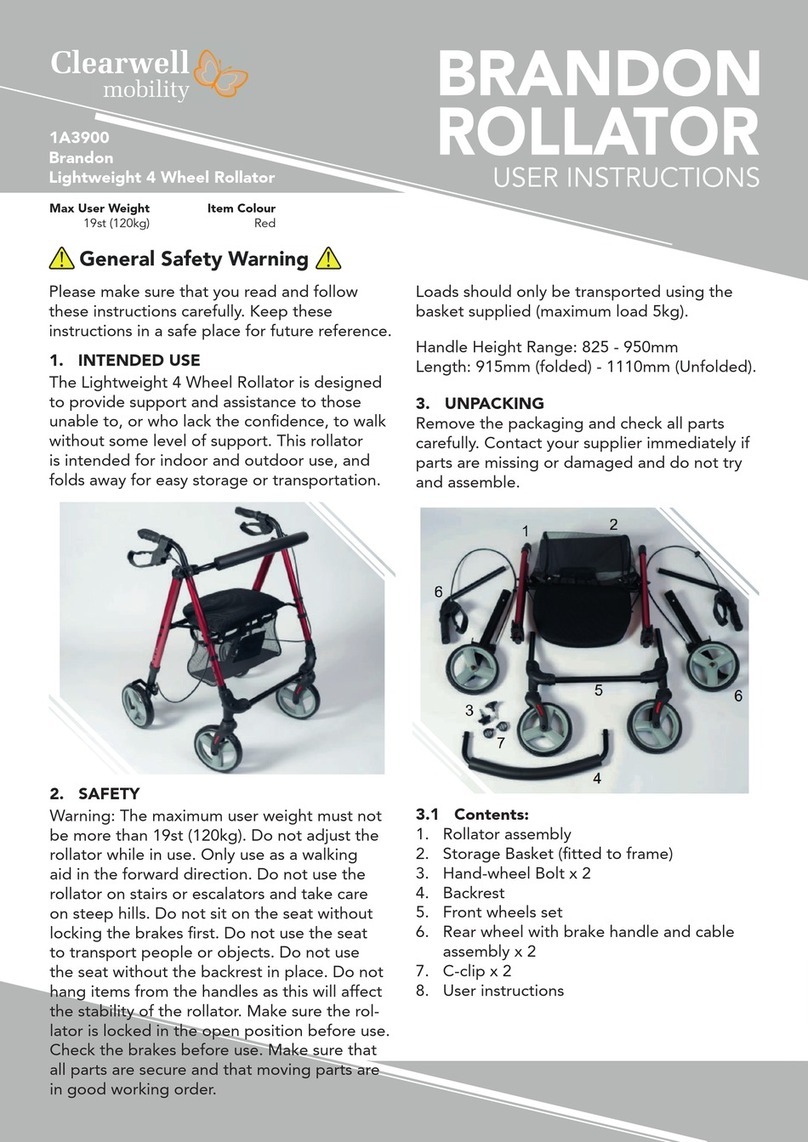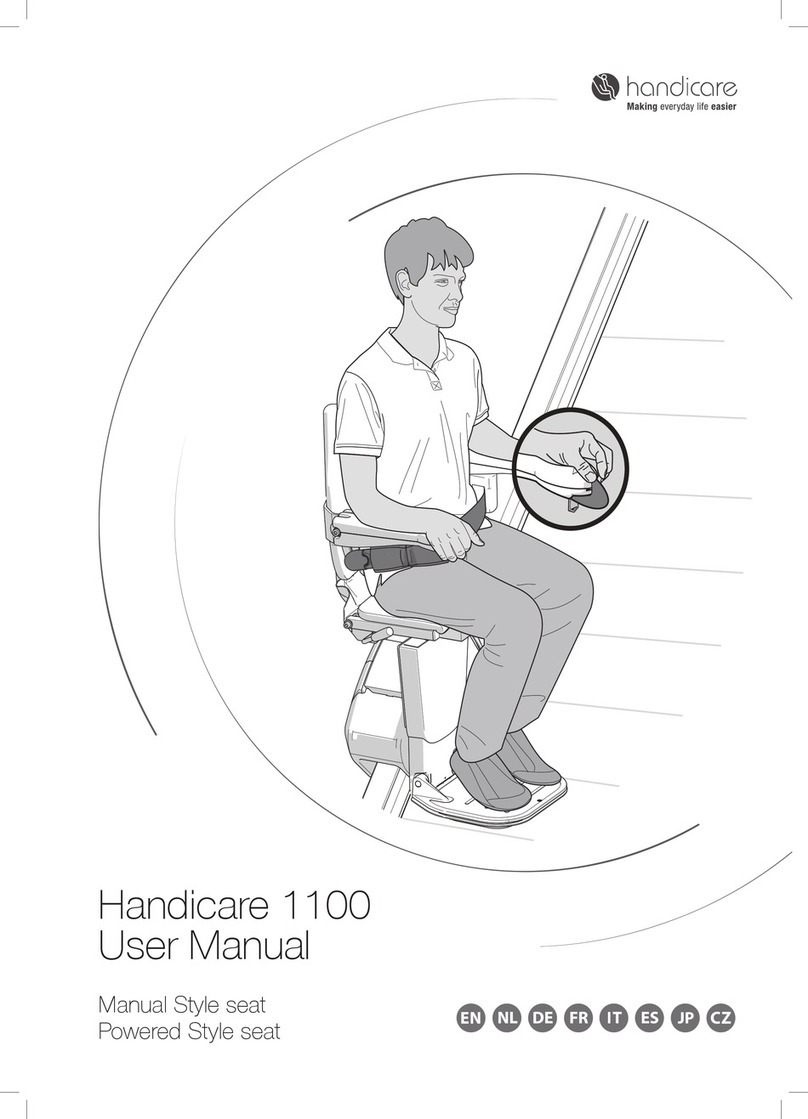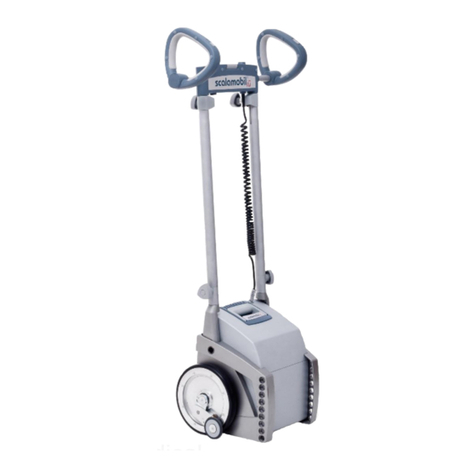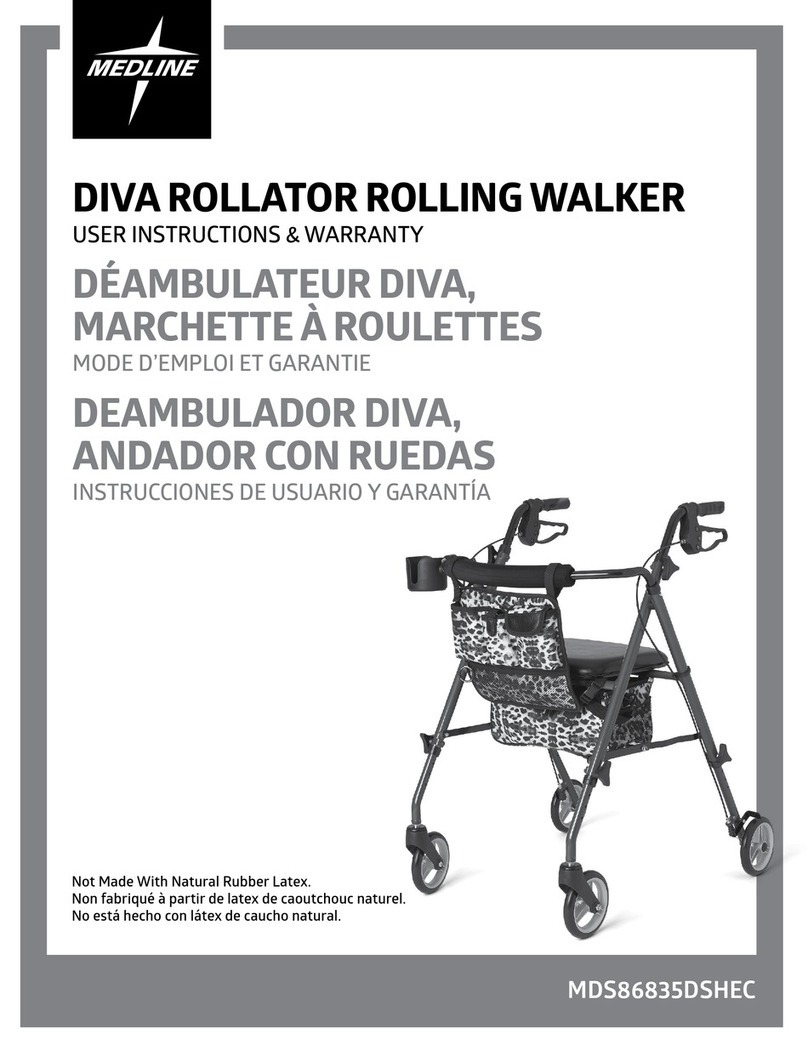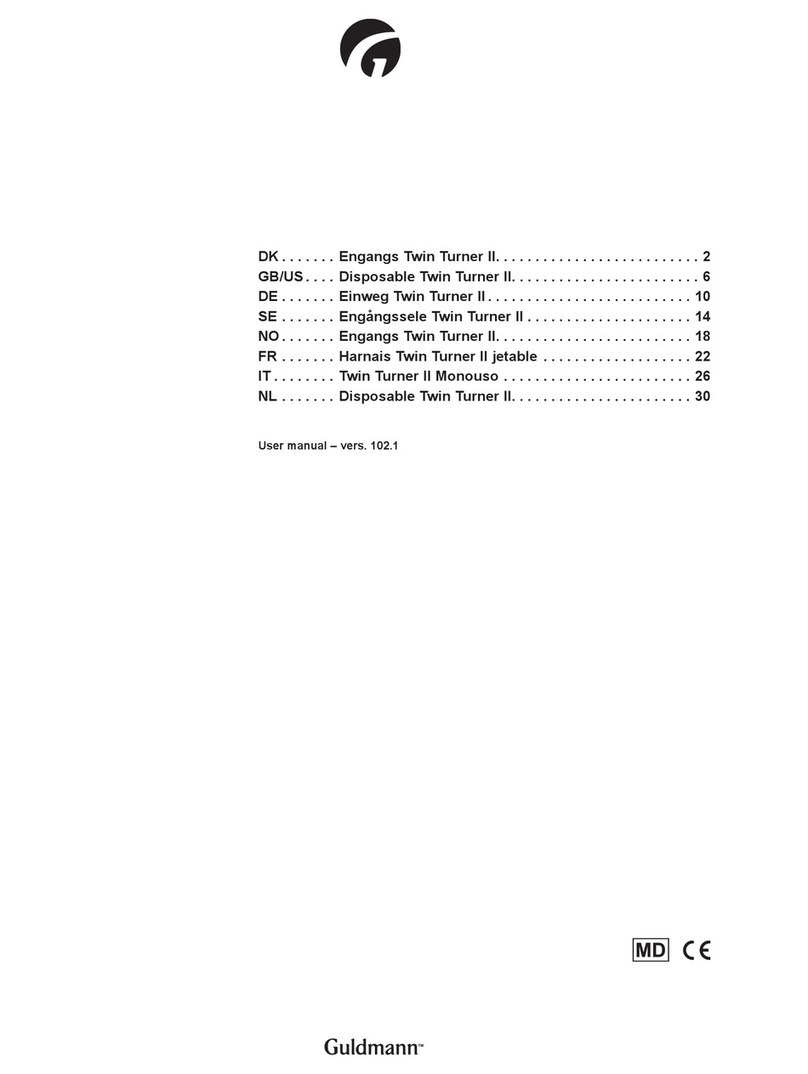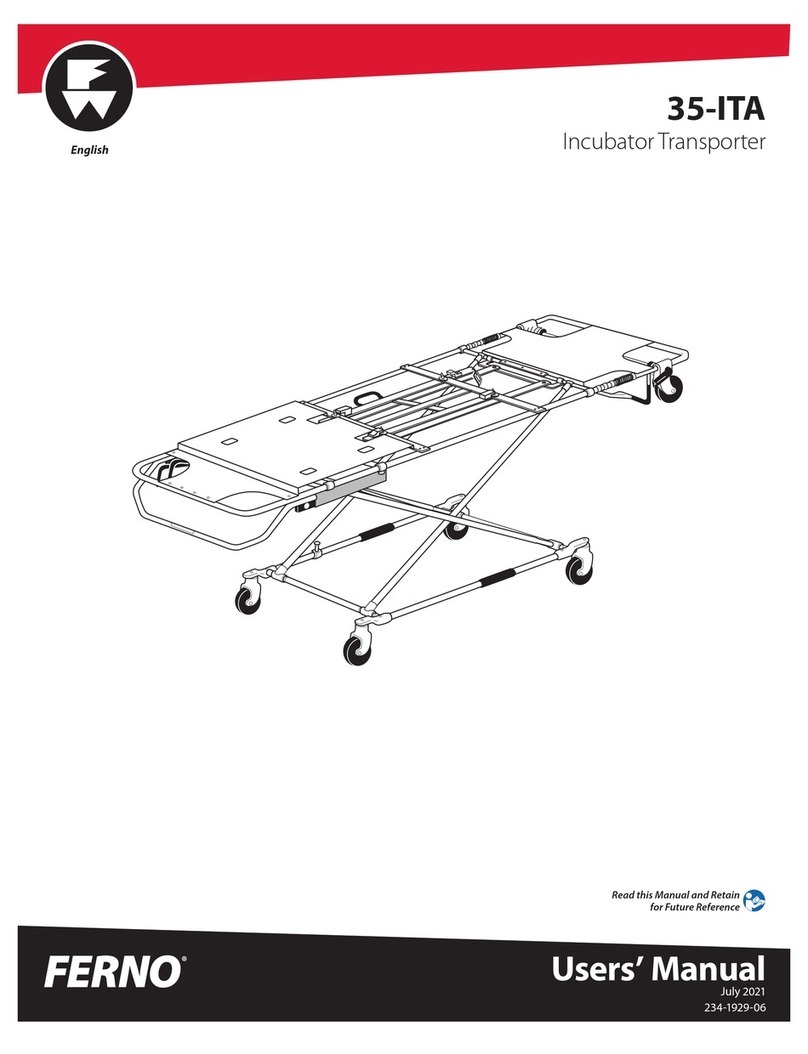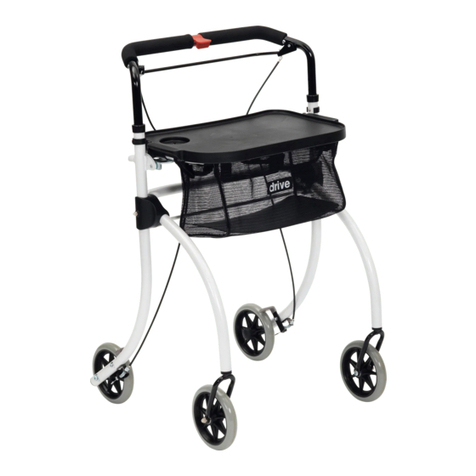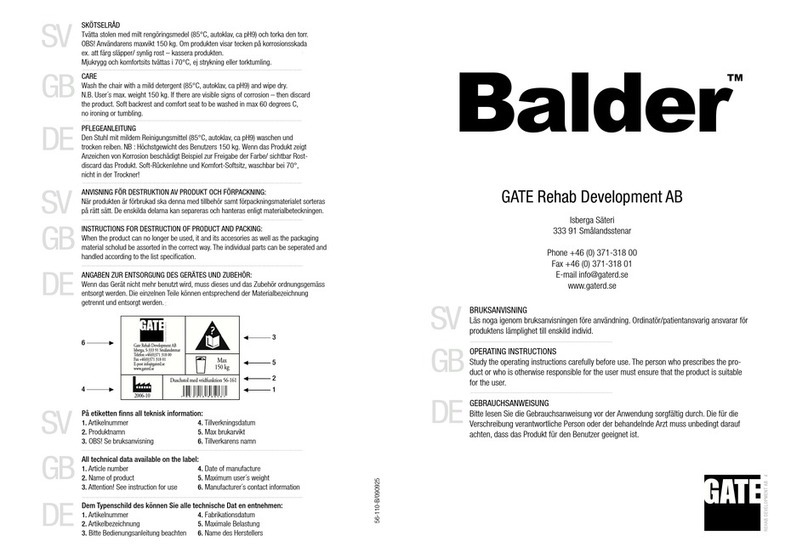Now we will cover how to tailor the fit of your iWALKFREE.
Adjustments are quick and easy and require no tools –just be sure that
you have ordered the correct size!
Wearing for the first time
YOUR SAFETY IS OUR FIRST CONCERN, SO BEFORE
USING YOUR IWALKFREE, please do the following:
1. Read all instructions before starting the fitting process.
2. MAKE SURE THAT YOU ARE COMPLETELY FAMILIAR
WITH THE VARIOUS ADJUSTMENTS. Before wearing
the iWALKFREE, practice adjusting the knee platform height
, adjusting and removing the thigh straps and setting the height
of the knee tray.Once you are familiar with them, you can try
on your iWALKFREE for the first time.
3. UNTIL YOU ARE PROFICIENT AT WEARING AND
USING YOUR IWALKFREE, SUPPORT YOURSELF
USING A HANDRAIL, PARALLEL BARS OR
SIMILAR. Good household substitutes include the back of a
sofa, a sturdy table or chair back, a guard rail or any other
stable, waist high or higher device that can support your
weight.
4. IMPORTANT –KEEP AS MUCH WEIGHT AS POSSIBLE
ON YOUR UNINJURED LEG WHEN PUTTING ON THE
IWALKFREE. TRY TO PUT AS LITTLE WEIGHT AS
POSSIBLE ON THE IWALKFREE UNTIL ALL THE
STRAPS ARE ON AND ADJUSTED.
